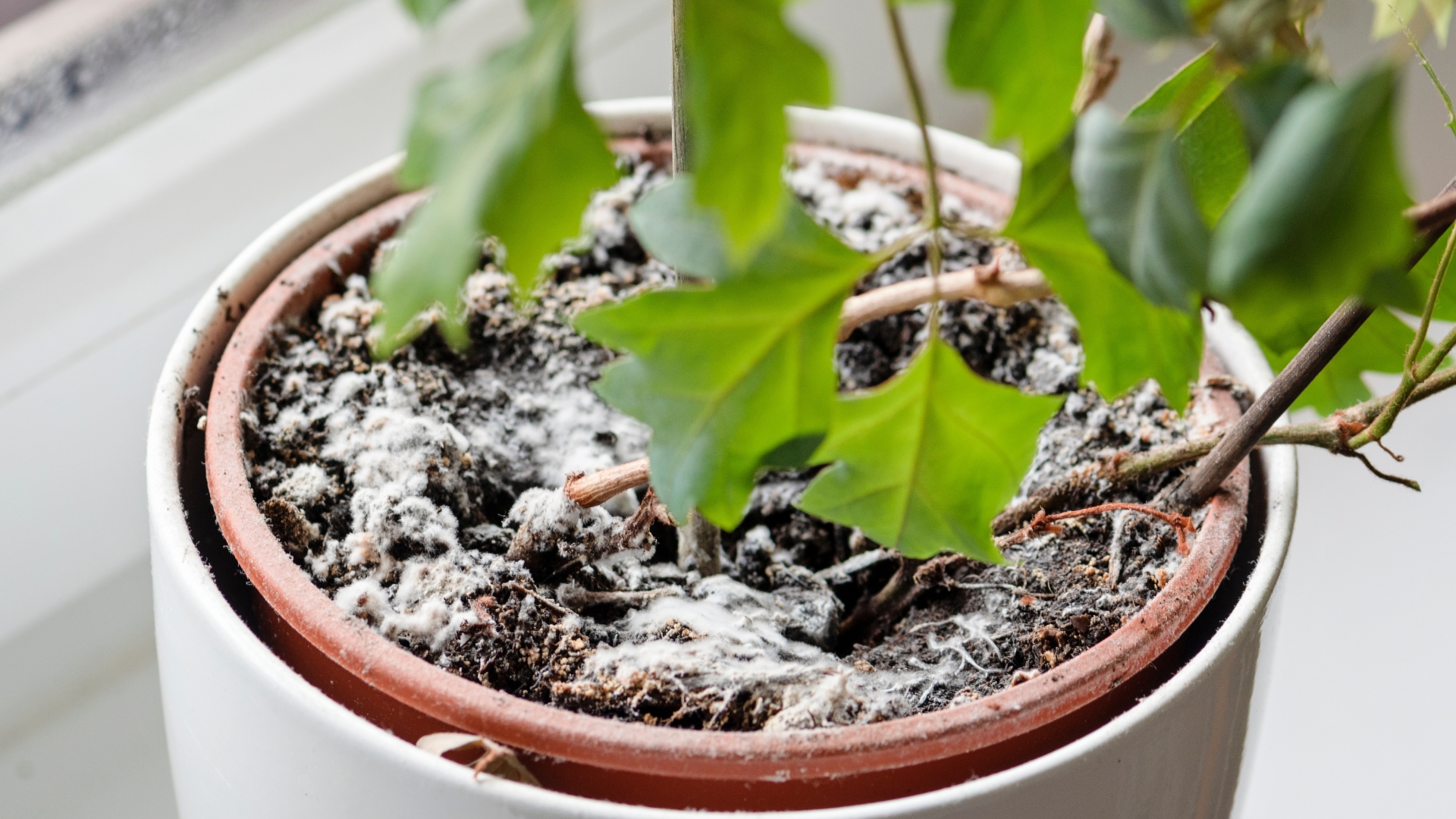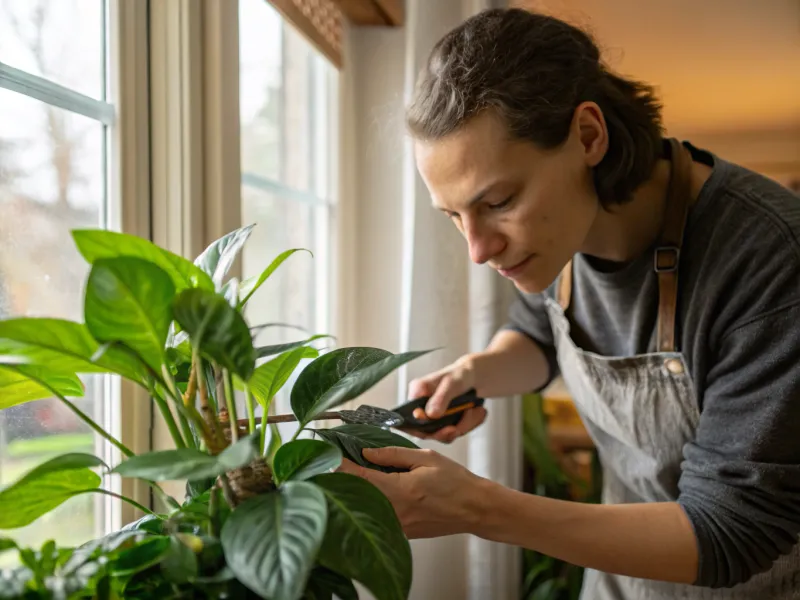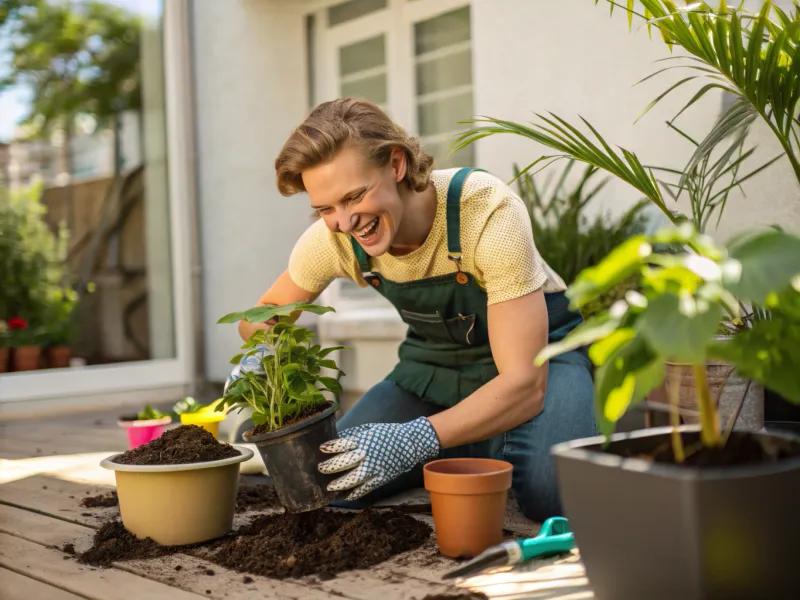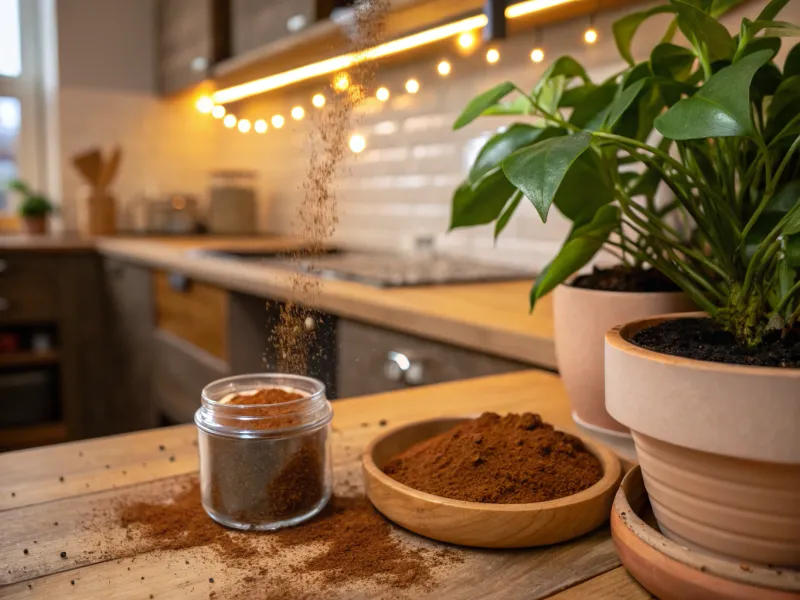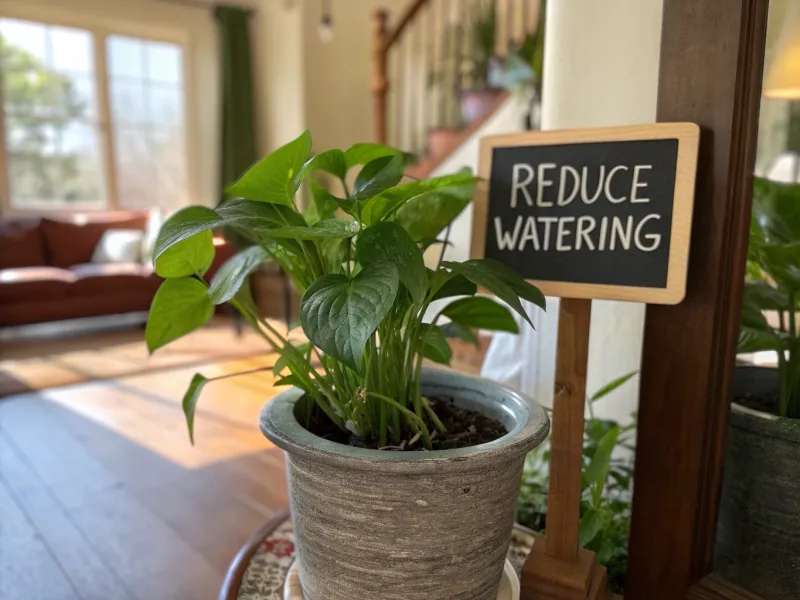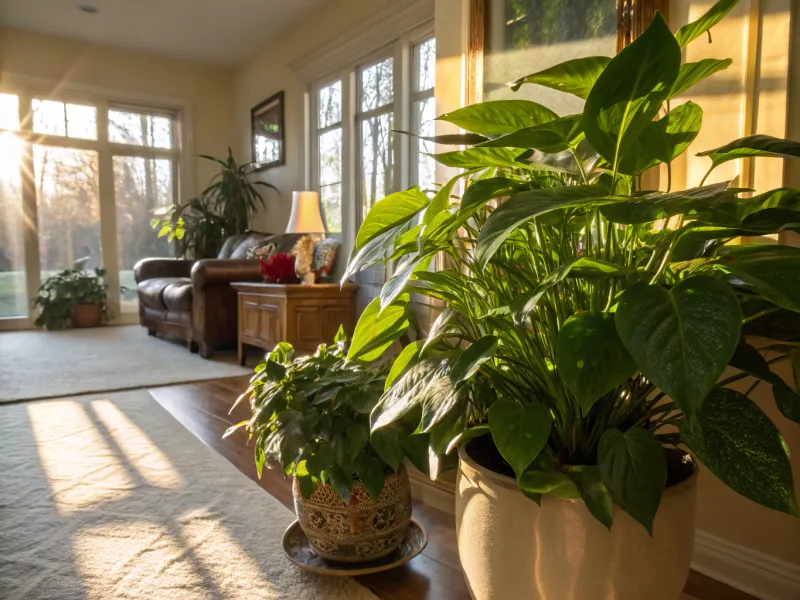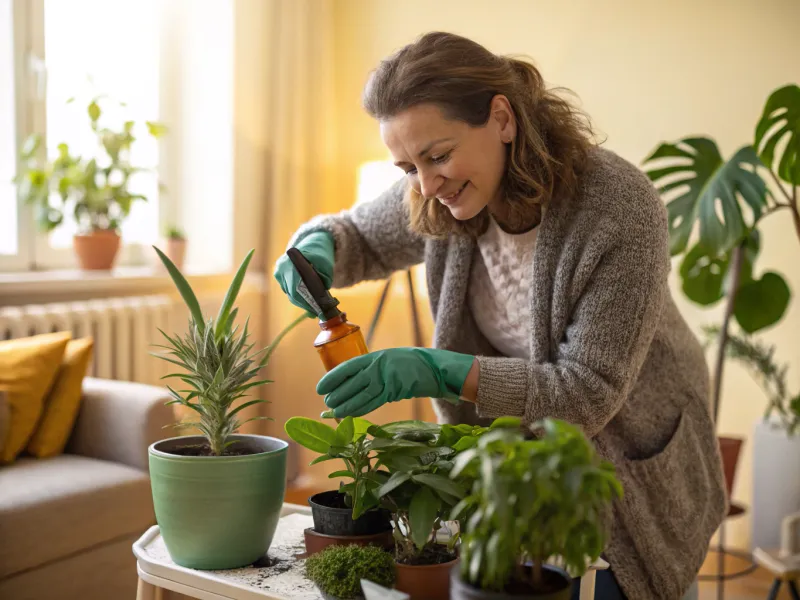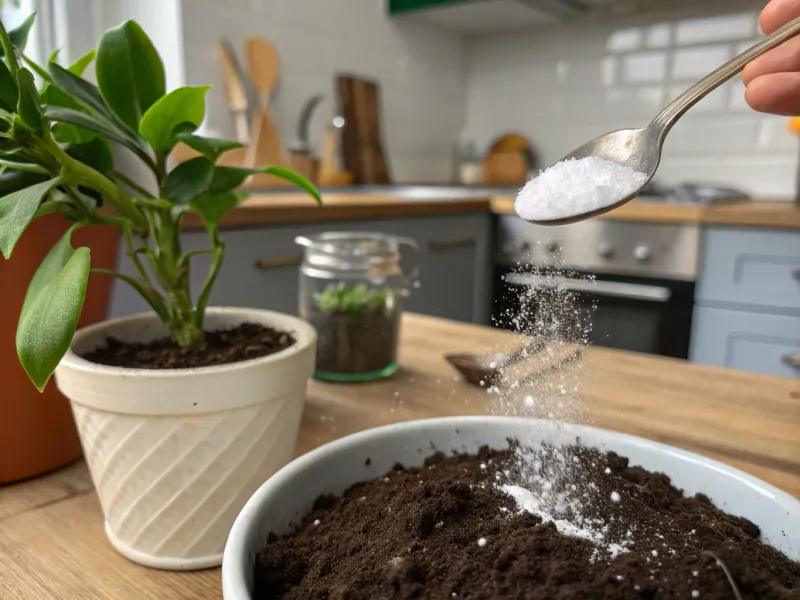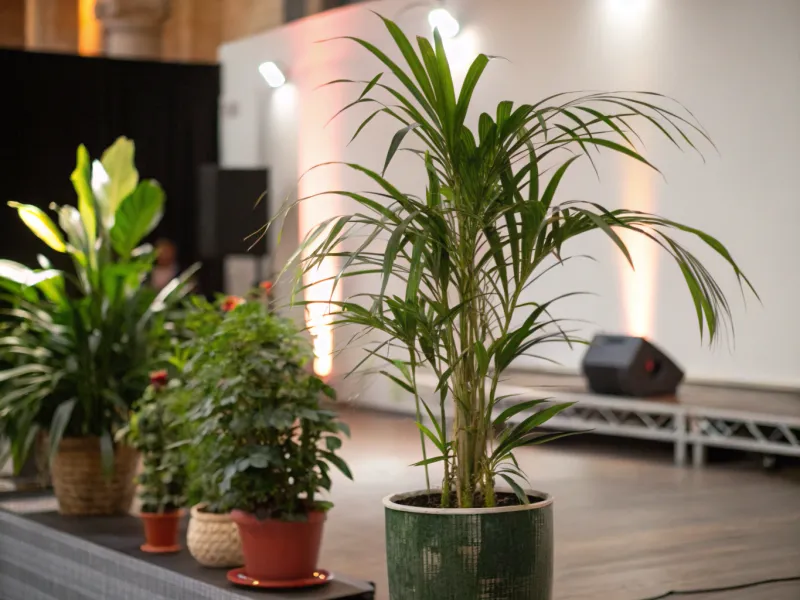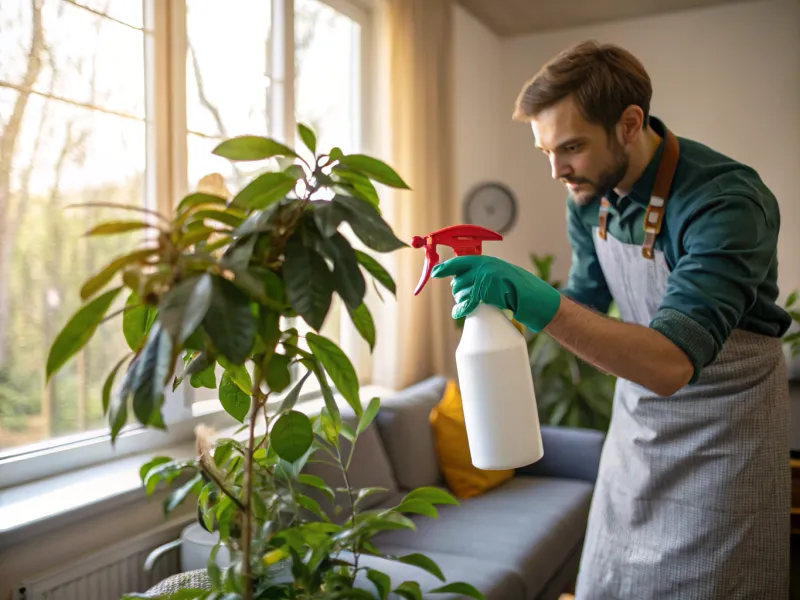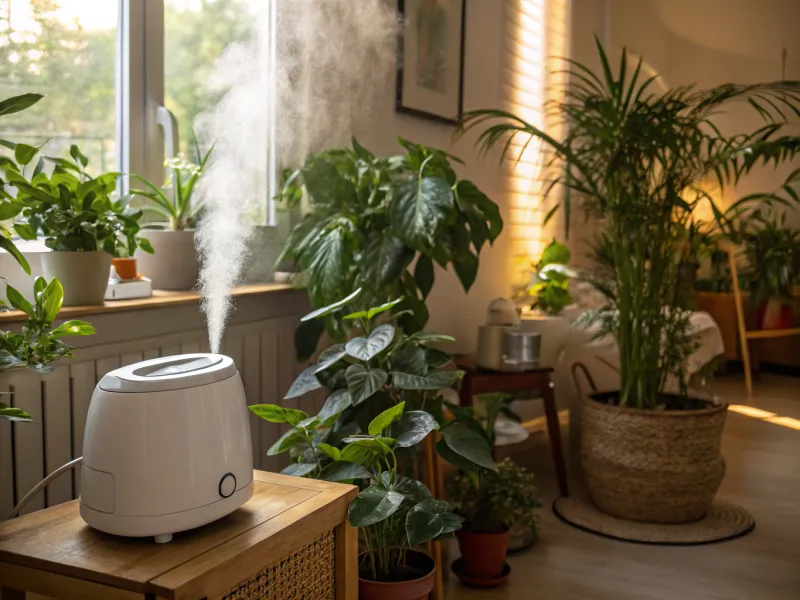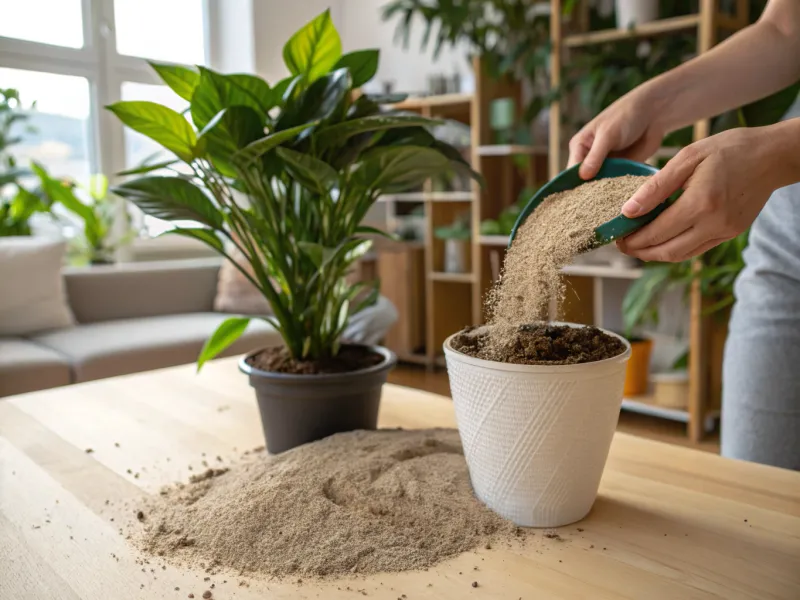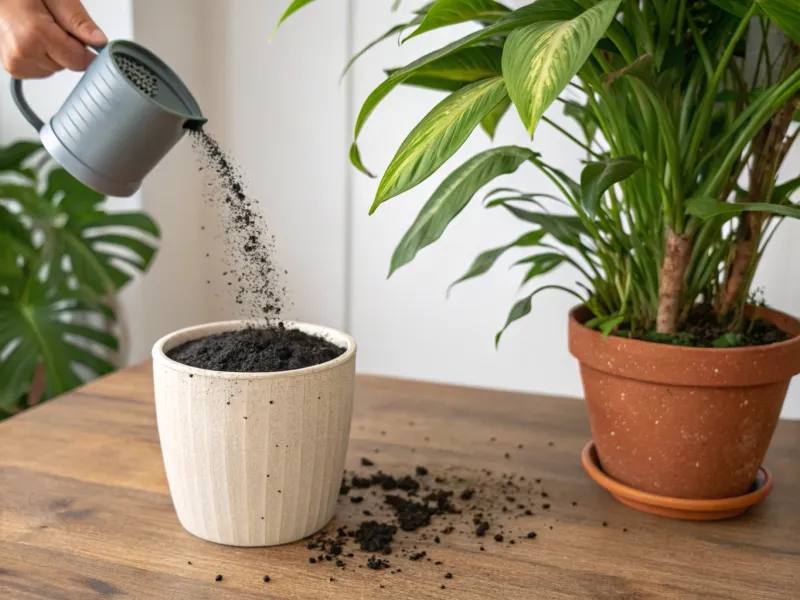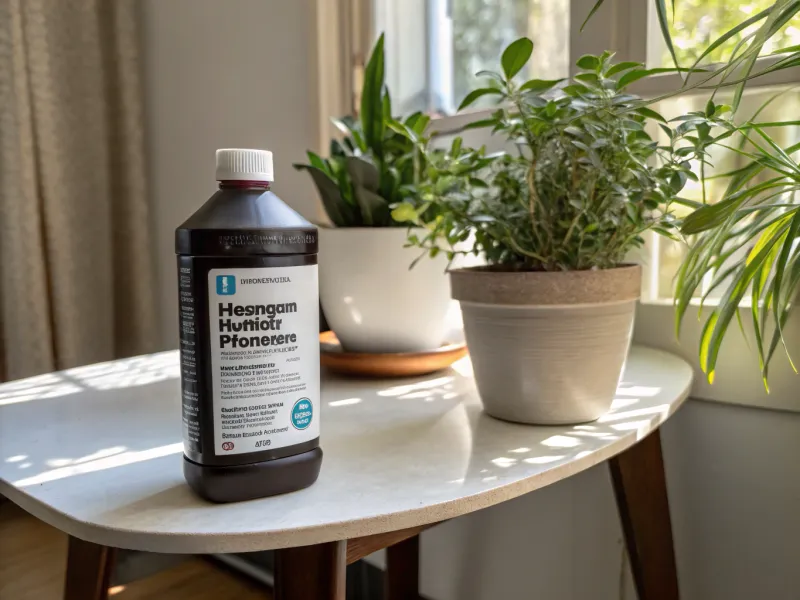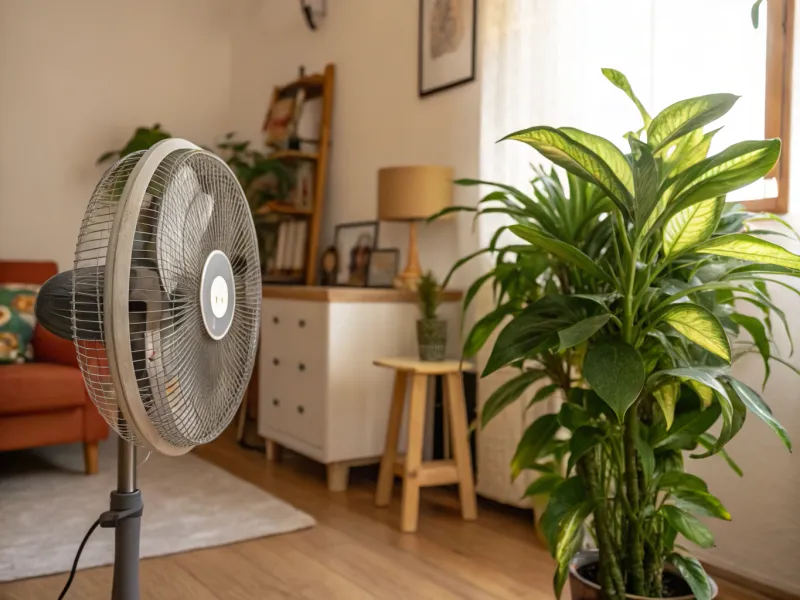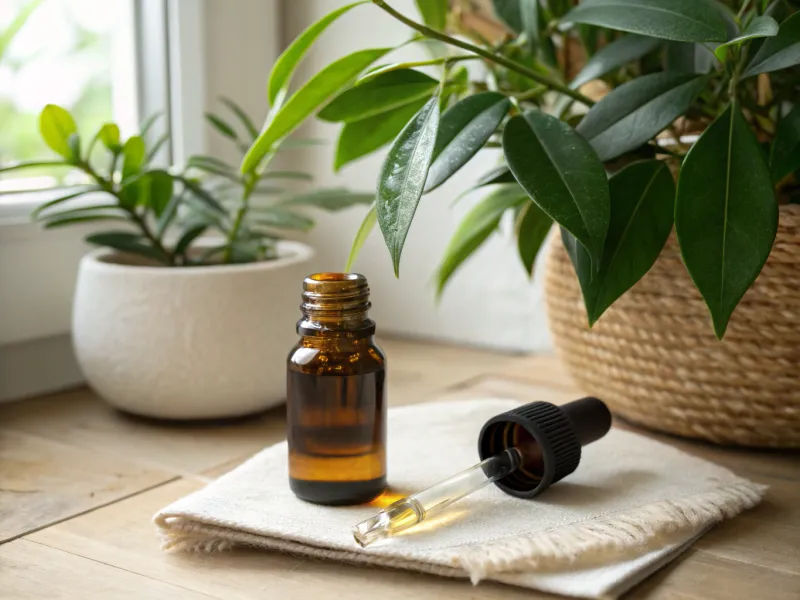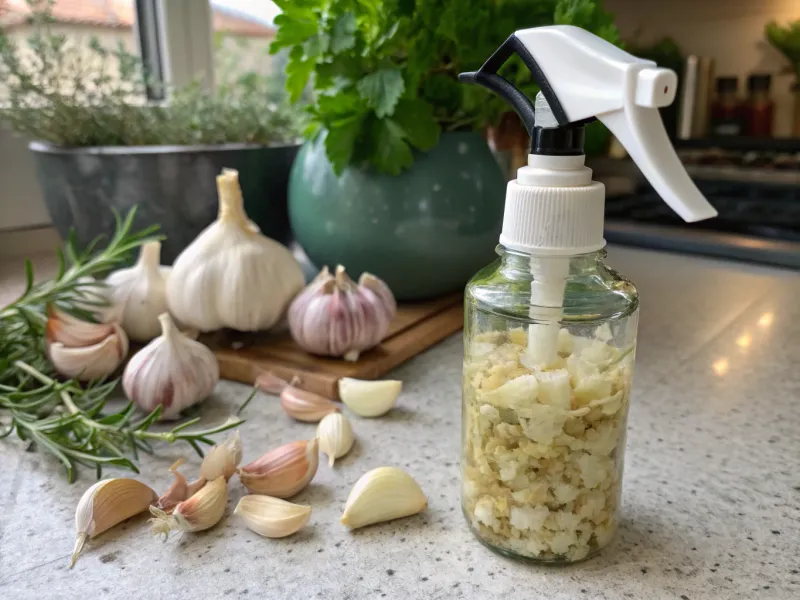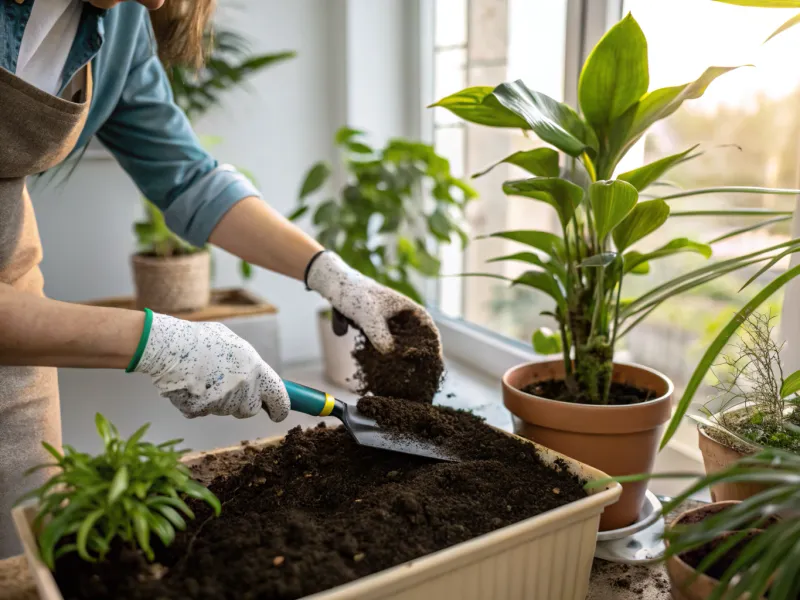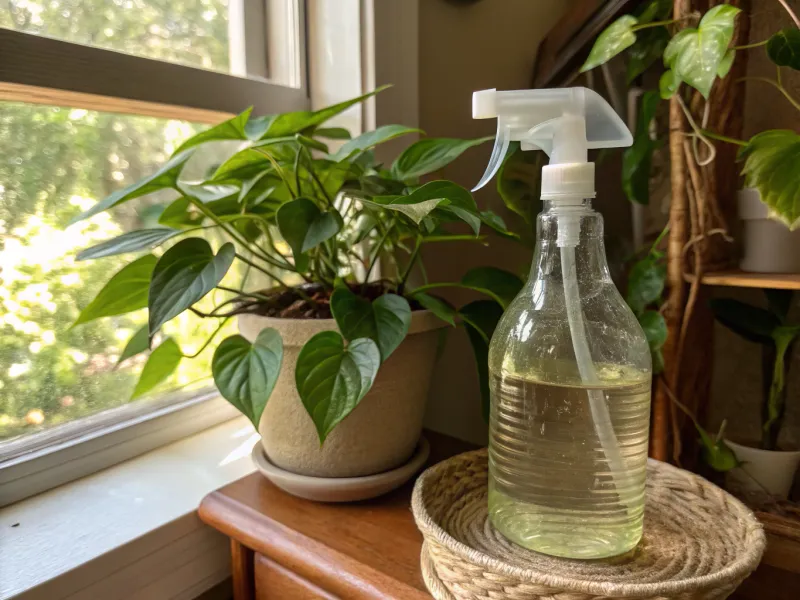Finding mold on your houseplant can be a real bummer, and I’ve been there myself. It’s a sign that something’s not quite right with the plant’s environment, but the good news is, it’s fixable.
The first thing you’ll want to do is stop and assess the situation – no need to rush in just yet. Let’s take a closer look at how mold might show up and what it means for your plant.
1. Air Out the Room
Letting your room breathe is like giving your plants a spa day, complete with fresh air and a gentle breeze. Mold detests a well-ventilated space, so keep those windows open!
Position your plant near the waft of fresh air, and watch as the mold waves its white flag of surrender. Just be mindful of any sneaky drafts that might give your plant the chills.
2. Trim Affected Leaves
Channel your inner plant stylist and snip away those pesky mold-invaded leaves. Not only does it improve your plant’s look, but it also sends a clear message to mold: eviction notice served!
Precision is key, so grab those scissors and get to work, ensuring your plant gets the makeover it deserves. After all, mold-free leaves are the new black in the plant fashion world.
3. Repot the Plant
Sometimes, a change of scenery is all it takes to get rid of unwanted house guests. Repotting your plant not only refreshes its environment but also eliminates mold hiding in old soil.
Choose a potting mix with excellent drainage, and watch your plant thrive in its new home. Remember, a happy plant is one that feels comfortable in its own soil.
4. Use Cinnamon Powder
Spice things up with a dash of cinnamon—it’s not just for lattes anymore! Cinnamon powder acts as a natural antifungal agent, making it a gentle warrior against mold.
Sprinkle a little on the soil, and let its sweet aroma do the talking. Your plant will thank you for the aromatic defense against those moldy intruders.
5. Reduce Watering
More water doesn’t always mean more love when it comes to houseplants. Mold enjoys damp conditions, so cutting back on watering deprives it of its favorite hangout.
Observe your plant’s thirst levels and only water when necessary to keep those mold spores at bay. Remember, a dry spell might just be what the plant doctor ordered.
6. Increase Sunlight
Bring on the sunshine! Mold despises sunny spots, so move your plant to an area where it can bask in natural light.
Sunlight not only helps plants grow but also makes mold pack its bags and leave town. Just ensure your plant doesn’t get sunburned—moderation is key in this sunny eviction strategy.
7. Use Neem Oil
Neem oil is the superhero cape your plant needs to fend off mold villains. Known for its antifungal properties, neem oil creates an unfriendly environment for mold to thrive.
Apply it gently to affected areas, and let this natural remedy work its wonders. Your plant will feel like it’s wearing a protective shield against moldy foes.
8. Wipe with Soap Solution
Give those leaves a bubble bath! A mild soap solution can help wash away mold and its spores, leaving your plant sparkling clean.
Gently wipe each leaf, and make sure to rinse with water afterward to prevent any soap residue. Your plant will emerge from this spa treatment fresh, clean, and mold-free.
9. Apply Baking Soda
Baking soda isn’t just for cookies; it’s a plant’s best friend in the fight against mold. This common household ingredient can alter the pH on your plant’s surface, creating an inhospitable environment for mold.
Mix it with water and spray gently on affected areas for a fizzy, mold-busting experience. Your plant will feel like it’s having a day at the spa!
10. Isolate the Plant
Sometimes, a little ‘me-time’ is just what a plant needs to shake off mold troubles. Isolating the affected plant prevents mold from spreading to others, giving it space to recover.
Think of it as a plant quarantine, where the focus is on healing and rejuvenation. Your plant will appreciate the solitude and the chance to shine on its own.
11. Use Fungicide
In the battle against mold, sometimes you need to bring in the big guns. Fungicide can be an effective way to rid your plant of stubborn mold problems.
Carefully read the instructions and apply as directed to ensure your plant’s safety and health. With fungicide by your side, mold will be waving the white flag in no time.
12. Improve Humidity Control
Creating the perfect climate is no small feat, but your plant will love you for it. By managing humidity levels, you can discourage mold from settling in and overstaying its welcome.
Use a humidifier or dehumidifier to maintain the ideal balance for your green friend. Your plant will thrive in this well-regulated environment, free from mold’s clutches.
13. Add Sand to Soil
Who knew a beach getaway could be part of your plant’s anti-mold strategy? Adding sand to the soil improves drainage, making it less appealing for mold to take root.
Mix it in and watch as your plant enjoys this vacation-like treatment. It’s like giving your plant a little piece of paradise, right in its pot!
14. Use Activated Charcoal
Activated charcoal isn’t just for detox smoothies; it’s a mold-fighting powerhouse too. Adding it to your plant’s soil can help purify and absorb excess moisture, making the environment less inviting for mold.
Your plant will appreciate the fresh start and the extra layer of protection. It’s a detox plan that even your houseplants can enjoy!
15. Try Hydrogen Peroxide
Hydrogen peroxide is like a secret weapon in your plant care arsenal. When used properly, it helps clean away mold and adds oxygen to the soil, promoting healthier plant growth.
Carefully dilute it and apply it to combat mold without harming your plant. With this bubbly buddy, your plant will feel revitalized and ready to flourish.
16. Monitor Air Circulation
A gentle breeze can work wonders in keeping mold at bay. By improving air circulation around your plant, you make it harder for mold to settle down and stay.
Use fans or strategically open windows to create a draft that’s just right for your green companion. Your plant will dance happily in this breeze, free from mold’s pesky grip.
17. Use Tea Tree Oil
Tea tree oil isn’t just for your skincare routine; it’s a mold-busting hero too. Known for its antifungal properties, a few drops mixed with water can help you tackle mold problems effectively.
Spray gently on the affected areas and let the natural remedy work its calming magic. Your plant will feel pampered and protected with this spa-like treatment.
18. Try Garlic Spray
Garlic might ward off vampires, but it turns out it’s also a formidable foe against mold. Creating a garlic spray can help repel mold with its natural antifungal properties.
Crush a clove and mix with water to create a potent solution that leaves mold quaking in its spores. Your plant will bask in the aromatic protection, feeling safe from mold’s clutches.
19. Replace Topsoil
Sometimes, a fresh start is as simple as a new layer of soil. Replacing the topsoil removes mold spores and refreshes your plant’s environment.
Dig out the old, and add a new, nutrient-rich layer that encourages growth and health. Your plant will thrive with this new beginning, free from the shadows of mold.
20. Use Vinegar Solution
Vinegar isn’t just for salad dressing; it’s a natural mold deterrent too. A solution of water and vinegar can help clean away mold and refresh your plant’s leaves.
Spray gently on affected areas and watch as mold packs its bags and leaves. Your plant will feel rejuvenated and ready to soak up the sunshine with a vinegar-powered cleanse.

